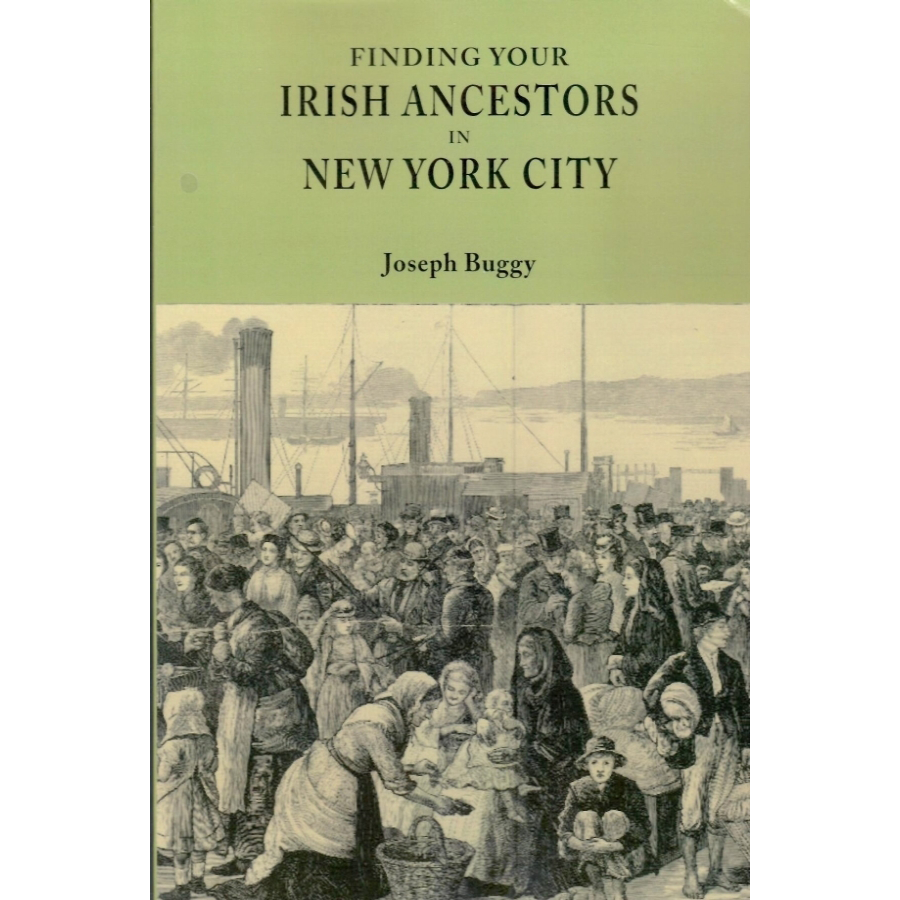Finding Your Irish Ancestors in New York City
Couldn't load pickup availability
New York City is the capital of Irish-America. Since the late 1600s, but especially through the 1800s, millions of Irish men, women, and children immigrated to North America, primarily through Manhattan's welcoming harbor. From 1846 to 1851 alone, the tragic years of the Irish Famine, upwards of one million persons immigrated to the U.S. and Canada, mostly through the port of New York. In due course, the Irish of New York established a thriving subculture comprised of business establishments, societies and libraries, newspapers, mostly-Catholic schools and churches, and other institutions, many of which survive to this day.
Descendants of the Irish exodus to New York will discover that this book is a publication worthy of this proud heritage. Mr. Buggy presents a comprehensive overview for anyone wishing to trace their Irish ancestors within New York City. In the process, he has incorporated recent developments in New York Irish genealogy, such as the discovery of the records of the Emigrant Savings Bank, and builds upon them with additional insight. Since the immigrant ancestor who arrived in New York represents the best chance of finding the place of origin in Ireland, helping the researcher find the place of origin of that immigrant ancestor is the central objective of this work. Toward that end, the author provides detailed information about records, resources, and strategies for achieving this objective.
Finding Your Irish Ancestors in New York City is divided into eleven chapters. Chapters One through Three introduce the record groups in New York City. Fundamental sources such as census and vital records are covered, along with underutilized record sets that can be of particular use when tracing Irish ancestors. Chapters Four through Six delve deeper into researching the Irish in New York City. There is a focus on research strategies that can be utilized when researchers encounter those genealogical brick walls. Irish people from particular counties often lived in certain parts of the city, and this is outlined in detail. Following this, twenty-one different record sets and publications are explained in detail, as they give the place of origin in Ireland for over 160,000 nineteenth-century immigrants and many hundreds of thousands more in the twentieth century. The next three chapters focus on the Roman Catholic Church. An historical analysis outlines how and why the church is so important for Irish genealogical research. Chapter Eight, in particular, contains the most detailed listing to date of every Catholic parish that has ever existed in each of the five boroughs. All important start dates for parish registers are also included. The subsequent chapter on cemeteries lists every known Catholic, public, and non-denominational cemetery that has existed in the city. The concluding two chapters compile comprehensive lists of journal articles, web sites, and other publications that will aid the researcher and provide a wider understanding of the lives of the Irish in New York City.
Given the scale of the Irish experience in New York, it is somewhat surprising that we have had to wait so long for a comprehensive guidebook on the subject. This work not only makes up for lost time but also sets a very high bar for anyone else who might choose to tackle the subject.
Joseph Buggy
2014, paper, 166 pp.
ISBN: 9780806319889
102-776
